[Ebook Việt Hóa] New Plant Parent - Darryl Cheng, Chi Monstera - Chi Quái Dị
[Ebook Việt Hoá] New Plant Parent (Darryl Cheng) – Phần 02 – Monstera (cây thuộc chi Quái Vật)
- Nguồn: [Ebook] New Plant Parent: Develop Your Green Thumb and Care for Your House-Plant Family – Darryl Cheng
- Biên tập: Dũng Cá Xinh (Tháng 01/2022)
- Dịch: Team Codai.net
English
Monstera
Attracted by its fascinating leaf patterns, you might adopt one of these without recognizing the “monster” within. Even though it may look well behaved, monstera (Monstera deliciosa) is an aggressive vine with very large leaves. The greater the long-term light intensity you can provide, the shorter the inter-leaf spacing will be and the more compact your plant will be, but over time, it will become quite large. Although the popular explanation for the fenestrations (holes and cuts) in the plant’s leaves is to resist breakage from strong winds and rain, research has shown that the adaptation is, in fact, a light-capturing optimization strategy—like creating a net with bigger holes to cover more area with less material
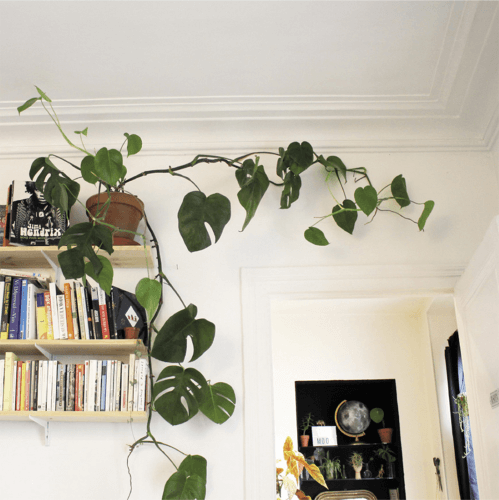
Survival strategy
If you must keep your monstera at a distance from a window, it’s possible to starve it gracefully and not kill it, but not if you follow instructions for a growing plant. The plant can scrape by with 50–100 foot-candles at the brightest part of the day. Keep the soil on the dry side, and once a week or so loosen it with a chopstick so the roots don’t suffocate. When the leaves look really floppy and thin (because they are finally dehydrated), loosen the compacted soil and pour in just enough water to cover the entire surface to a depth of about 2 inches (I’m assuming the pot is at least 8 inches in diameter). If the plant is thirsty enough, you shouldn’t get any water running down to the bottom of the pot, where it may linger for weeks. Be prepared to cut off older leaves as they yellow—this is the plant abandoning them as the food reserves are depleted without being replenished. New growth will be small and weak, and if the soil is too moist, it may have dark brown tips. Weak plants are also more susceptible to illness, and if your plant was acquired fresh from the nursery, it will grow more spindly as it stretches for light.
Growth strategy
With a nice view of the sky (200 or more foot-candles, and some sun is tolerable), your monstera will happily use up water, so you can bring the soil to saturation whenever it becomes dry to a depth of a few inches.
Soil management
The monstera’s soil will eventually be depleted of nutrients, but since monsteras tend to be sold in large pots, you may opt for a top dressing instead of a complete repotting. If you see several new leaves growing, then you can safely apply some fertilizer for the next few weeks. Soil structure is usually pretty good (nice and loose), so just aerate the soil occasionally, maybe every third or fourth watering.
Subjective life span
A monstera can grow for decades in the right environment. Each individual vine will carry about five-to-seven leaves, dropping the oldest leaf as a new one grows. If the tip of the vine is growing too far for your liking, you can simply prune it back to the oldest one or two leaves and give the piece you cut off to a friend to root.
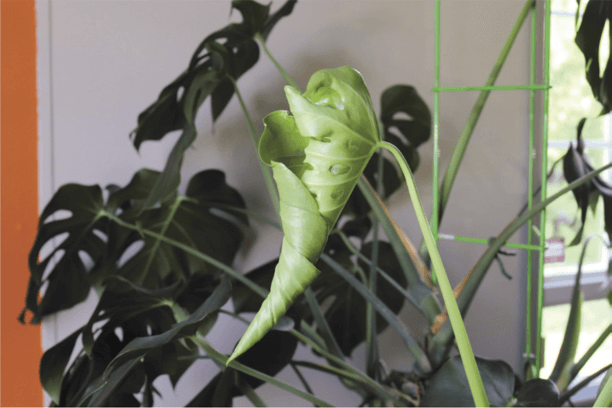
Observations from Monstera Parenthood
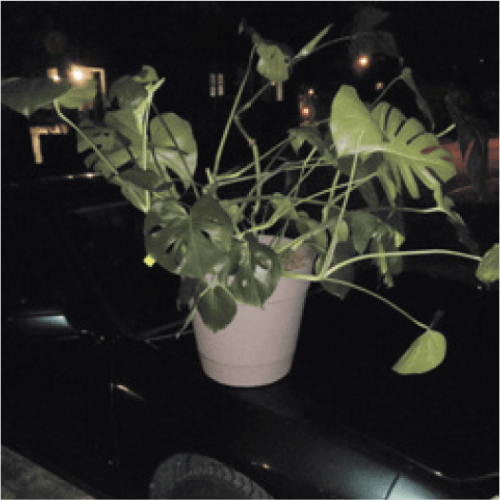
Day 1
I responded to a classified ad from someone wanting to sell off this Monstera deliciosa because it was becoming too unruly for their small space. Asking price: $10.
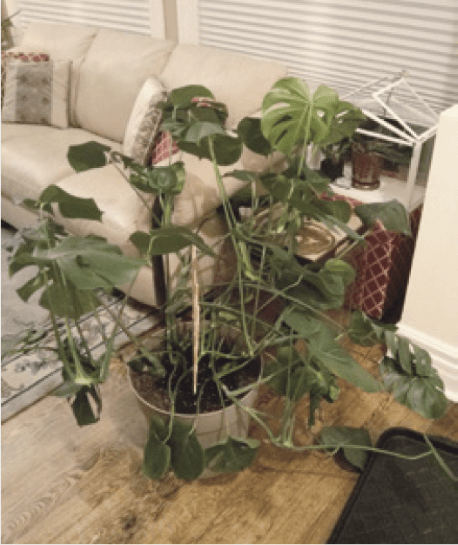
7 months
Using a small bamboo trellis from the dollar store, I tied up the vines to give the overall plant a more compact look. Monstera’s vines want to grow along some surface, so in a container without a support for them to grow on, the plant will always become unruly and flop over the edges. In this location, the plant gets sunlight filtered through the blinds, measured at 300 foot-candles but only on a clear day. When it’s cloudy, the living room gets a dim 50–80 foot-candles. That’s a day when a monstera would go hungry.
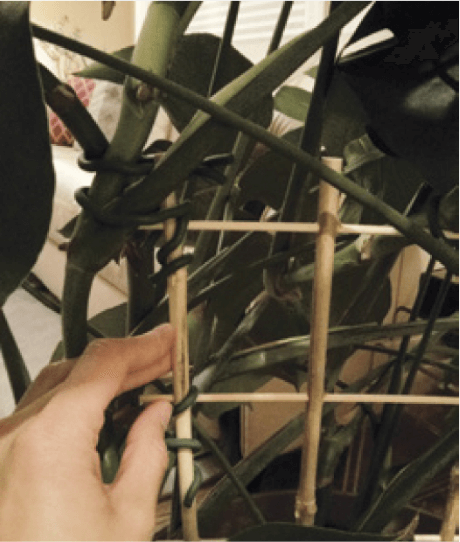
Monsteras develop aerial roots at nodes along their vines. In nature, these roots can attach themselves to trees. This secures the plant to its support and gives it water and nutrients all along the vines, which may be up to sixty feet long. In your home, it’s not necessary for the aerial roots to attach themselves to something like a moss pole or tree trunk. I just hold the vines against the trellis with soft rubber ties, available at most garden centers, and I direct the aerial roots down into the soil.
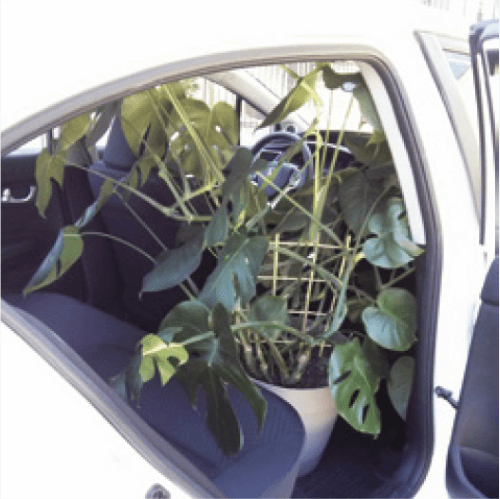
8 months
It’s a bittersweet day when I decide to move my monstera to my church, where she will have a room all to herself. With the front seat pushed all the way forward, my monstera fits right in my Honda Civic. An important change in care routine should be noted: I’m only at my church once a week, and it’s far from where I live, which means that I will be forced to water at fixed intervals. But since the light she will be getting is even brighter than in my home, I know that she will be thirsty within a week.
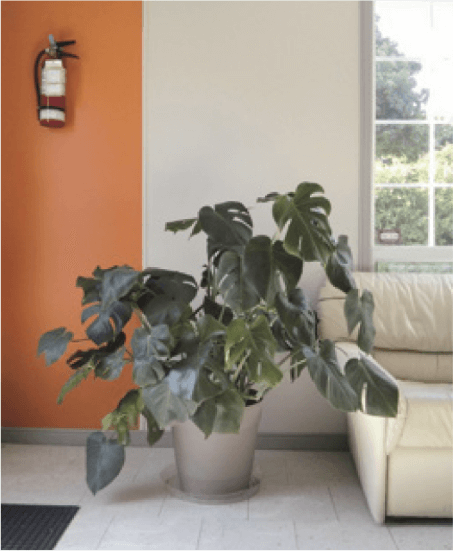
Don’t worry, monstera! I’ll be seeing you every week. This place has more space for you to grow and better light. Off to the left of this photo is a west-facing windowed door. Late-afternoon sun can be seen hitting the floor, so I’ve placed the plant slightly farther back so as not to burn the leaves. Maybe when she’s older, she’ll be able to handle some sun. To the right, a large north-facing window gives perfect “bright indirect light.” I measured the light from this area and got over 300 foot-candles. I think monstera will do very well here!
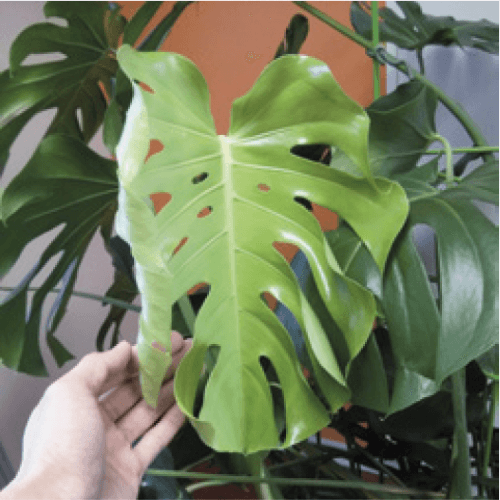
1 year
Leaves are getting more complex.
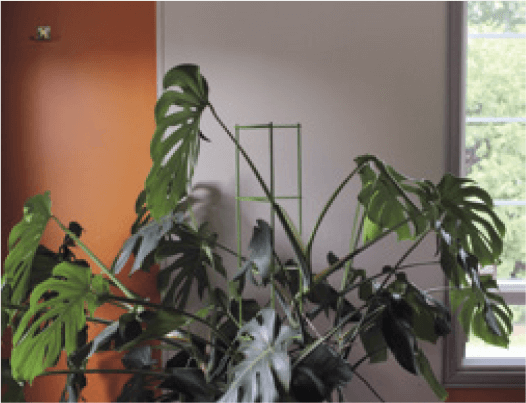
1 year, 3 months
The monstera has outgrown its bamboo trellis, so I bought a larger metal vegetable trellis. Again, I’m tying the main vines against the trellis and simply directing the aerial roots down into the pot.

2 years
What makes this monstera look so lush and full? There are seven vines in the pot. The growth pattern of Monstera deliciosa is a series of leaves on a single vine. Plants are typically sold as two to three vines in a pot, so even with proper care, the potential “fullness” is limited to the maximum number of leaves that each of those vines can support. Mine happened to have seven vines, so what you’re seeing is the combined leaves of those vines.
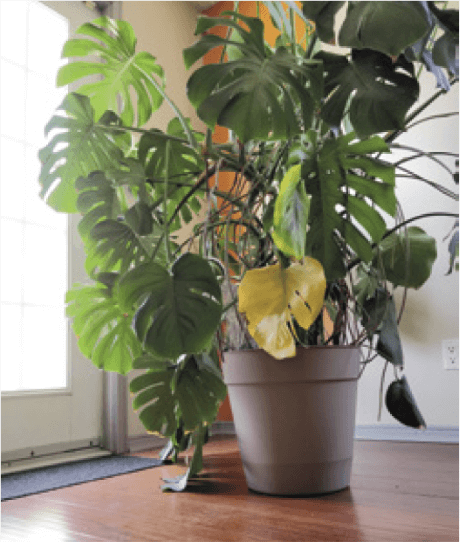
2 years, 4 months
At this point, my monstera started shedding a number of its oldest leaves. They gradually turned completely yellow; then they were easily removed from the vine. When you understand your growing conditions and their limitations, you can accept life and death. This shedding of older leaves is the reality of nutrient cycling: The plant is pulling the salvageable nutrients from older leaves to make new leaf growth possible. With fertilizer or soil top-dressing, the yellowing of this leaf could have been delayed, but it’s unrealistic to believe that it could have been prevented entirely. Accept that the plant must do what it needs for survival.
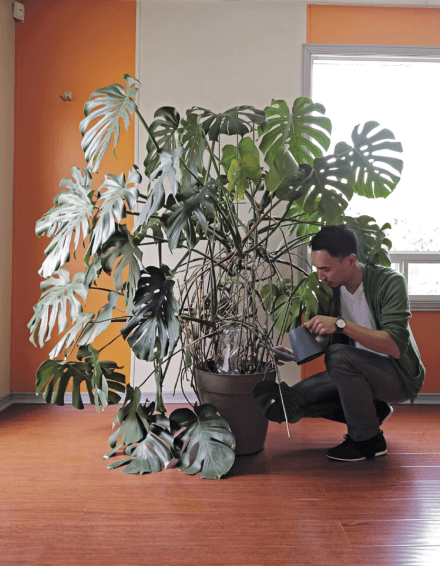
3 years
Some of the vines have started to grow away from the trellis. I will soon have to adjust them so they can continue to grow upward.
Tiếng Việt
Đang cập nhật
![[Ebook Việt Hoá] New Plant Parent (Darryl Cheng) – Phần 02 – Monstera (cây thuộc chi Quái Vật) [Ebook Việt Hoá] New Plant Parent (Darryl Cheng) – Phần 02 – Monstera (cây thuộc chi Quái Vật)](https://vn1.vdrive.vn/codai.net/2021/02/17-monstera.jpg)



